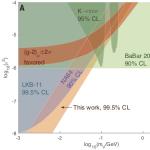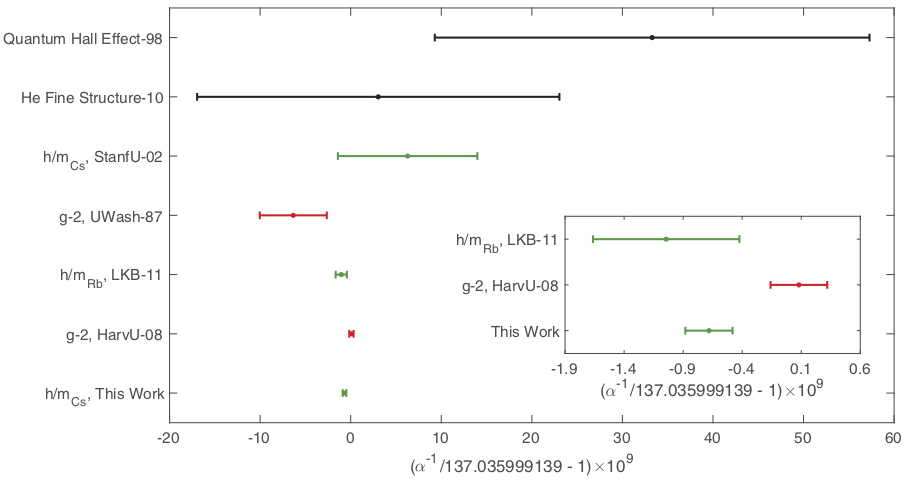Paper of the month: Measurement of the Fine Structure Constant as a Test of the Standard Model

by Josu Hernández-García and Xabier Marcano
January 22, 2019 by Bruno Martin
You too, electron?
Abstract. A new precise measurement of the fine-structure constant reveals a tension in the
electron (g−2)e. Interestingly, this deviation from the Standard Model value goes in the opposite
direction of that for the muon (g−2)µ anomaly, challenging many Beyond the Standard Model
scenarios.
The strength of the electromagnetic interaction, characterized by the
fine-structure constant
α, is one of the fundamental parameters in the description of particle interactions. Historically,
several methods have been used to measure this quantity, fi
nding good agreement among them as can be seen in Fig. 1. This is, indeed, a very good test of the Standard Model (SM) of particle
physics. At the same time, the errors have become smaller and smaller, being the most precise
value the one extracted from the electron anomalous magnetic dipole moment (codi
fied in the
quantity (g−2)e). Or at least it was.
Now, a new precise measurement of α has been presented in a recent paper [1]. This result is
important for the particle physics community mainly for two reasons. First, because it is the most precise measurement up to now. And second, because it has been obtained using a method which does not depend on the electron (g−2)e and thus, it can be used to test the SM prediction of the electron anomalous magnetic dipole moment. Interestingly, the electron (g−2)e reconstructed with this new measured value of α seems to be smaller than what the SM predicts.
In statistical terms, the discrepancy between the new and the previous measurements of
α is of 2.5σ. This number does not mean that the SM is in big trouble, although it is a bit
suspicious. Even more if we compare these results with the homologous one for the muon, where there could also be a hint for new physics. The well-known (3−4)σ discrepancy in the muon (g−2)µ indicates that its value could be larger than the SM prediction. Since the electron and muon (g−2) anomalies have opposite directions, any model beyond the SM trying to explain
why the muon (g−2)µ is larger than in the SM will also have to explain now why the electron
one is smaller. This is not an easy task, and actually many new physics models could be in
tension with this result. In particular, Ref. [1] shows that the dark photon hypothesis which
was proposed to explain the muon (g−2)µ anomaly, would be now rejected at 99.5% CL (see Fig. 2).
If these two anomalies were con
firmed with more than 5σ, theoretical physics would have a
challenging (although interesting) time trying to explain this new scenario. Nevertheless, future
experimental results (such as the experiment Muon g-2 at Fermilab [2]) will shed light on this
situation.
[1] Parker et al., Science 360, 191-195 (2018) [arXiv: 1812.04130]
[2] http://muon-g-2.fnal.gov

FIG. 1: Different measurements of α. Figure from [1].
.jpg)
FIG. 2: Exclusions for a model with a dark-photon of mass mV and mixing ε to the standard photon. The dark orange band would solve the muon g−2 anomaly, however it is in conflict with the new measurement of α. Figure from [1].


